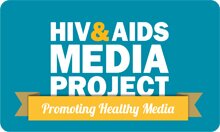Global HIV Infection and Mortality
The Global Epidemic
The Joint United Nations Programme on HIV and AIDS (UNAIDS) gives the following summary of the global epidemic in its ![]() 2009 AIDS Epidemic Update:
2009 AIDS Epidemic Update:
| Number of people living with HIV in 2008 worldwide | 33.4-million |
| Adults | 31.3-million |
| Women | 15.7-million |
| Children under 15 years | 2.1-million |
| People newly infected with HIV in 2008 worldwide | 2.7-million |
| Adults | 2.3-million |
| Children under 15 years | 430 000 |
| AIDS deaths in 2008 worldwide | 2.0-million |
| Adults | 1.7-million |
| Children under 15 years | 280 000 |
The ![]() UNAIDS 2009 AIDS Epidemic Update also states that:
UNAIDS 2009 AIDS Epidemic Update also states that:
- The pandemic claimed approximately 2.0-million lives in 2009; with approximately 280 000 being children.
- An estimated 2.7-million new HIV infections occurred worldwide during 2009. About 1.9-million of these infections occurred in Sub-Saharan Africa and 430 000 were children under the age of 15.
- In 2008 4.0-million people in low and middle income countries were receiving ARV treatment, therefore resulting in 2.9-million deaths being averted.
- More than 25-million people with HIV have died since the first cases of AIDS were identified in 1981.
- Accompanying this number deaths are a large number of orphans and vulnerable children. Some 14 million AIDS orphans have been noted in Africa alone
(Avert: World Statistics).
Fast Facts: Global infections
+33 Million According to estimates from theThe Epidemic by Continent
This visual summary was taken from the ![]() UNAIDS (2008) Report on the Global AIDS Epidemic.
UNAIDS (2008) Report on the Global AIDS Epidemic.

The Joint United Nations Programme on HIV and AIDS (UNAIDS) also gives the following summary of the global epidemic by region in its ![]() 2009 AIDS Epidemic Update:
2009 AIDS Epidemic Update:
| Adults and children living with HIV | Adults and children newly infected with HIV in 2008 | Adult Prevalence | Adult and child AIDS-related deaths | |
| Sub-Saharan Africa | 24,400,000 | 1,900,000 | 5.2% | 1,400,000 |
| North Africa and Middle East |
310,000
|
35,000
|
0.2%
|
20,000 |
| South and South-East Asia |
3,800,000
|
280,000
|
0.3%
|
270,000
|
| East Asia |
850,000
|
75,000
|
0.1%
|
59,000
|
| Oceania |
59,000
|
3,900
|
0.3%
|
2,000
|
| Latin America |
2,000,000
|
170,000
|
0.6%
|
77,000
|
| Caribbean |
240,000
|
20,000
|
1.0%
|
12,000
|
| Eastern Europe and Central Asia |
1,500,000
|
110,000
|
0.7%
|
87,000
|
| Western and Central Europe |
850,000
|
30,000
|
0.6%
|
25,000
|
| North America |
1,400,000
|
55,000
|
0.6%
|
25,000
|
| TOTAL |
33,400,000
|
2,700,000
|
0.8%
|
2,000,000
|
The latest UNAIDS![]() 2009 AIDS Epidemic Update also states the following:
2009 AIDS Epidemic Update also states the following:
- Sub-Saharan Africa has just over 10% of the world's population, but is home to more than 64% of all people living with HIV — some 22.4 million. In 2008, an estimated 1.9 million people in the region became newly infected, while 72% of all known AIDS-realted deaths emanate from this area.
- Women account for 60% of all HIV infections in Sub-Saharan Africa and infections rates of women in the age bracket of 15-24 are up to 3 times higher than that of men in the same age bracket.
- It is believed that adult HIV prevalence had its peak in the mid 1990’s and that the disease is now on a stable path. But stabilization does not necessarily mean the epidemic is slowing down. On the contrary, it can disguise the worst phases of an epidemic: A time when the number of new infections is roughly balanced out by the number of AIDS-related deaths.
- Southern Africa remains the worst affected sub-region in the world as it is home to the leading 9 countries with the highest infection rates globally.
- At the same time it is important to note that South Africa has the largest population of people living with HIV. According to UNAIDS (end of 2008) this figure is estimated around 5.7 Million.
- Although Sub-Saharan Africa might account for 71% of all new HIV infection, ARV treatment and supply rose from a measly 7% in 2003 to 42% in 2008.
- At present, ARV treatment is available to approximately 70% of the Sub Saharan population.
- Some countries in East Africa, such as Ethiopia, Kenya and Uganda, show signs of decline in HIV infection levels. Although this might be the case there still exists a great divide amongst the urban and rural population of the area. Urban areas in Ethiopia have a decreased infection rate measured in 2007 (8.7%) as compared to 2003 (10.0%). While rural populations have experienced an increase (2003- 5.6%) (2007- 7.0%).
Fast Facts: AIDS & Sub-Saharan Africa
10% of the world's population lives in Sub-Saharan Africa.
71% of the global HIV positive population lives in Sub-Saharan Africa.
Source:Fast Facts: Deaths from AIDS in Sub-Saharan Africa
1.4-million people i died of AIDS in Sub-Saharan Africa in 2008. Source:






